
- Home
- Gruissan: much more than a seaside resort.
Gruissan: much more than a seaside resort.
Preparations have begun: yes, some of you are already thinking seriously about the (graaaaand) summer vacations that await you! For our part, we wish you a fantastic one.
In order to ensure that each of our vacation destinations leaves you with unforgettable memories, we'll be offering a variety of articles to help you prepare and enjoy your stays.
It's a must in your travel diary .... Whatever your expectations, you're bound to find something to suit your summer vacation...: Gruissan! A summer destination par excellence, it nonetheless hides many heritage secrets and reveals itself to be a jewel box of history.
Are you looking for activities in the surrounding area? Would you like to find out more about the points of interest in the Gruissan area?
"What to do in Gruissan?" is your question of the moment? You're in luck.
The following lines reveal the sights of this season's place to be. Go!
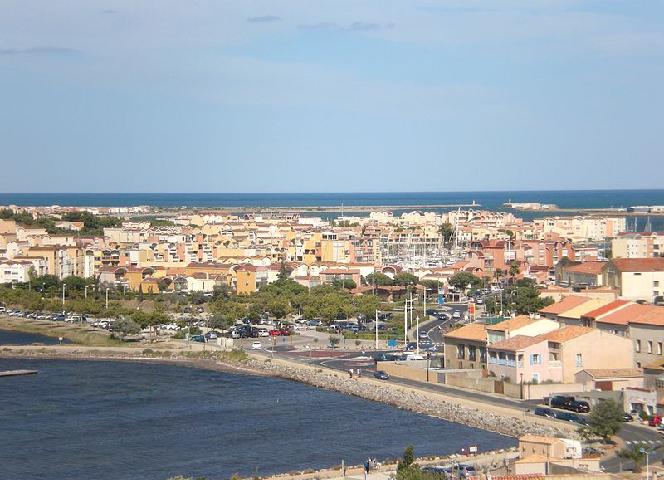
A well-organized village
Before the sandy beaches and Mediterranean ambience, Gruissan is first and foremost an old circular village dominated by a castle and the ruins of its medieval "Barbarossa" tower. Typical fishermen's cottages orbit the surrounding area.
Finally, the marina (quite distinctive from "rive gauche", and "rive droite") hosts much of Gruissan's local life.
More to the south, Gruissan is also represented by its seaside resort, popular with holidaymakers.
A history, a heritage
La grotte de la Crouzade
Nestled in the cliffs of La Clape, and overlooking the Gouttine valley, it was discovered at the end of the 19th century (1866). Listed as a Historic Monument since 1928, it was opened to the public (following various excavation sessions) on the occasion of the European Heritage Days. Archaeological surveys continued until 2018.
The Crouzade cave has revealed fossils of homo sapiens sapiens, recognized as one of the oldest vestiges of modern anatomy in Western Europe.
The Middle Ages, too, are one of Gruissan's historical foundations. Indeed, the lord of Gruissan was none other than the Archbishop of Narbonne, initiator of a heritage that is easy to see even today, with notably ... :
Le château de Gruissan
Perched on a mound, it overlooks the Aude delta and proved to be strategically located in Antiquity (watching over galleys heading to the port of Narbonne), then in the Middle Ages, when it was a stronghold in the defense of the latter.
This sentinel was joined by the first fishermen's huts, which crowded around it to keep safe from Barbary pirates and privateers.
The fortress has been through many conflicts, even destroyed and then partly rebuilt. The fact remains, however, that it has a fascinating history that has spanned the centuries, just like its Barbarossa tower.
The remains of the site have, moreover, undergone extensive restoration, initiated by the municipality, in order to make this heritage accessible to all.
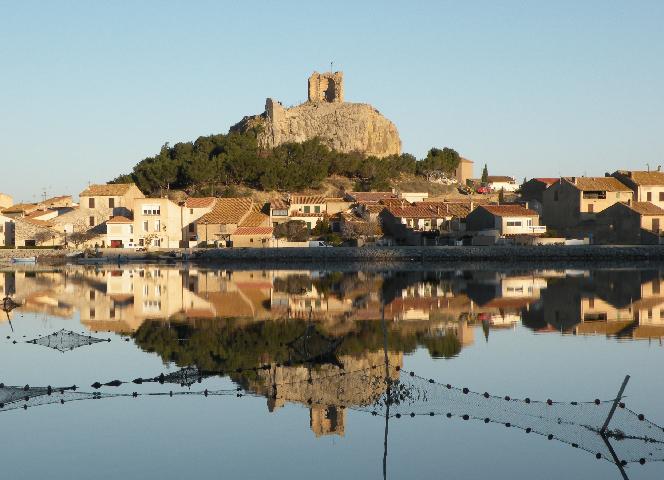
The Barbarossa Tower
The origin of the name has always remained uncertain. It is thought, however, that the name of the famous tower derives from "Barberoussette", half-pirate, half-corsair, officiating in the waters of the Gulf of Lion. Be that as it may, its history is marked by these legends and other customs, and the name of the tower crosses the ages and is therefore all the more legitimate.
.Notre-Dame des Auzils
This chapel, built in the 17th century, is historically descended from a 12th-century priory (Dame Dals Auzils). Ideally situated with a view of the sea, it is perched high above La Clape (the region's typical limestone massif). Its choir has the singularity of being built over a cave (the Grotte Saint-Salvaire)!
More information on La Clape: https://maisondelaclape.com/
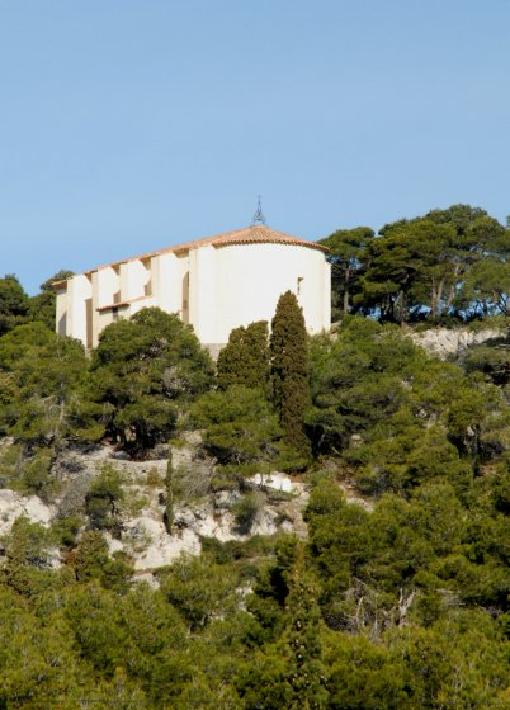
Interesting to know, too: to get there, you can follow the 26 cenotaphs that line the path to the chapel. These bodiless tombs were erected in tribute to sailors lost at sea, and feature their names and the (sometimes distant) story of their shipwrecks, in a calm and protective natural environment.
The Hermit Garden (close to the marine cemetery) is also worth a detour for walkers.
The chapel was classified as a Monument Historique in 1964, renovated in the 70s. This was followed by the classification of "Les Auzils" as a Historic Site.
For more information, consultez (ici) le guide des randonnées à faire dans la nature de Gruissan.
Gruissan, a multi-faceted seaside resort
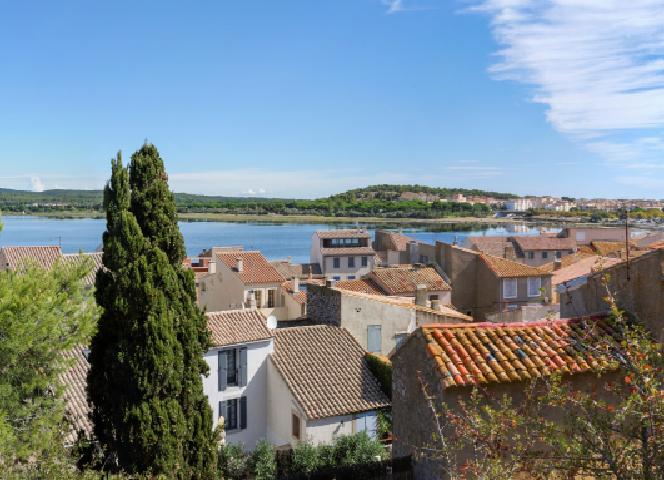
Gruissan village
As mentioned above, Gruissan is a typical village on the Languedoc coast. It is formed in circulade: its lively lanes (restaurants, shops ...) are organized around the block supporting the castle, and reflect a Mediterranean art of living. It's a pleasant place to stroll as you please, and observe the little houses with their red roofs and ochre walls.
Did you know? The term "circulade" refers (according to architect Krzysztof Pawlowski) to a medieval circular village whose circle is the basis for all or part of the distribution of urban space.
Not far from the Gruissan town hall, the Place Gibert market is held regularly (all year round, from 8am to 1pm, Mondays, Wednesdays and Saturdays).
Find ici toutes les informations pratiques sur les marchés à Gruissan.
Gruissan village is also rich in its 13th-century Gothic parish church (Notre-Dame de l'Assomption), where you can admire paintings and ex-voto. The one in tribute to a shipwreck of four boats, and particularly significant of the life of fishing sailors, was created by the Aude painter Jacques Gamelin.
Le Pech des Moulins is a site formerly occupied by five grain and oil mills spread over the five hectares of the site (which were used to grow cereals and pasture sheep). Today maintained by the municipality and increasingly visited, it highlights major elements of Gruissan history and the economic place that was "le pech" ("hill" in Occitan), including a bread oven, a press, a capitelle (dry-stone hut), a noria (hydraulic machine) ... in a flourishing environment of olive trees, almond trees and vines.
Don't hesitate to take a tour around this symbol of Gruissan, and admire the local panorama on the horizon (Gruissan, La Clape, the ponds ...).
Practice: Take rue du Pech, join the tribunal des prud'hommes pêcheurs, from where you can reach the Pech orientation table.
"There is, in the Mediterranean, a professional maritime fishing institution, whose origins, at least sociologically, go back more than a thousand years: the prud'homies of fishermen."
Local curiosity: founded in 1791 and the institutional expression of fishermen, the Prud'homie of Gruissan is made up of a community of fishermen officiating on a regional territory. Historically, the Prud'homie was responsible for managing services of general interest that benefited the entire community (provision of hangars, fuel distribution, etc.).
As you can see, Gruissan has always asserted its identity as a fishing village.
The Prud'homie has always been a fishing village.Gruissan plage
What would Gruissan be, without its wooden chalets (made famous by Jean-Jacques Beineix's film "37°2 Le Matin")?
Built on stilts, more than a thousand houses symbolize one of Aude's friendliest beaches: the Plage des Chalets, south of Gruissan, with its 150m width and 2km length. (Florida isn't far away anymore!?).
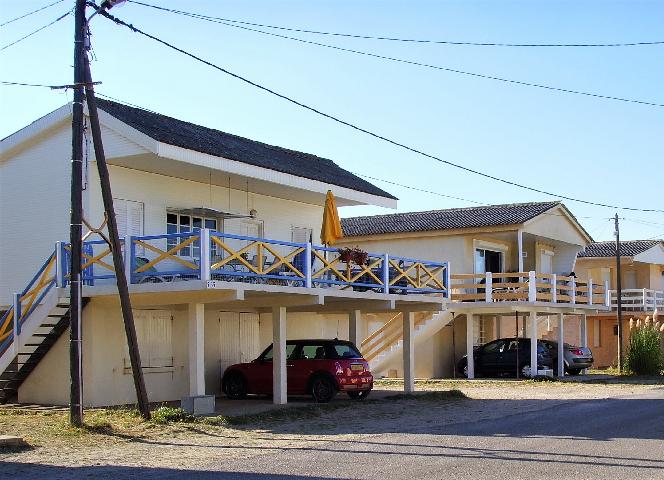
The first cottages were built at the end of the 19th century, and used to welcome families from Narbonne and the surrounding area who came to Gruissan to recharge their batteries. Rebuilt after the Second World War, they enjoyed a considerable tourist boom from the 1970s onwards (development of Gruissan port).
Some chalets are rented out, while others are occupied year-round.
Concerning Gruissan's other beaches:
- La plage du Grazel is an enclosed artificial beach, located in the center of the resort (opposite the Île Aux Oiseaux).
- La plage des Ayguades is located further east of the resort, not far from the wild beach of Mateille and the Etang des Ayguades (and your favorite Cévéo center), on the way to Narbonne-Plage.
Did you know? Mateille beach is a natural site classified by the Conservatoire du littoral and has a nautical base. Its marine lake is especially well-suited to windsurfing activities.
- Finally, on the way to Port-La-Nouvelle: Plage de Vieille Nouvelle (or Plage des Salins) is a lesser-known wild beach, with a less built-up environment. But it's well worth a visit if you enjoy windsurfing or kitesurfing. In fact, according to some connoisseurs, the tramontana wind in this spot is very favorable to water sports.
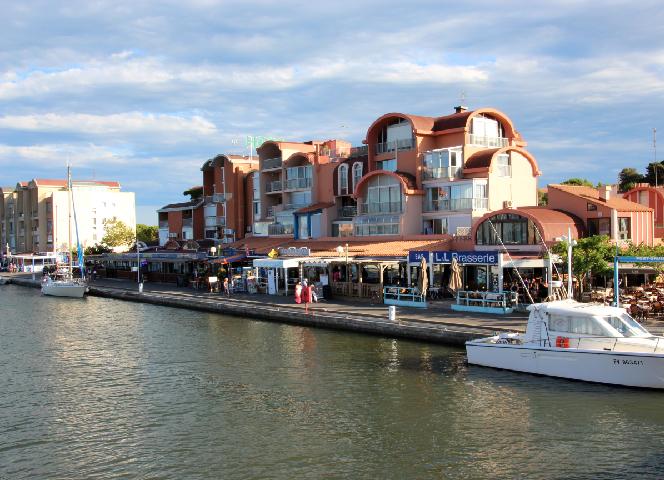
Gruissan port
Fishermen previously used to moor their boats at a causeway equipped with three wooden bridges called "lo clòt". Transformed into a shelter basin for boats following work initiated in 1895 by the municipality, it became Gruissan's small fishing port.
As for yachtsmen, since the 1960s they have benefited from facilities dedicated to their activities: quays, pontoons and buildings. Today, the district is known for its architecture, which blends port and city structures.
Did you know? The marina was named Port Exemplaire de France in February 2016, by the French Ministry of Ecology and Sustainable Development, under the heading of maritime and coastal ports.
To be awarded, marina projects must be particularly exemplary in terms of eco-responsible practices, sustainable development and territorial integration, subjects that resonate with Cévéo.
Modern, the marina can accommodate 1,300 boats. It's one of the few in Languedoc-Roussillon where berths are free, to encourage stopovers.
Furthermore, it offers all types of services and shops nearby, such as:
- shops, restaurants, bars, ice cream parlors,
- specialized providers in the nautical world,
- the harbor master's office,
- the convention center,
- the cooperative winery.
Events are frequent, and it's not uncommon to meet artists (musicians, painters, sculptors ...) in this lively Gruissan district!
In keeping with the overall dynamic, a footbridge links the right and left banks; a modern, elegant structure inaugurated in 2007, which has given its impetus to the surrounding area as a whole.
Fittingly, the left bank district (commonly known as "Mateille") is a syncretism of summer and year-round Gruissan residents. Equipped with cycle paths, it offers the opportunity to get around and get to various places quickly, by bike. It offers, among other things:
- a French sailing school,
- stadiums, discos,
- the tourist office,
- access to the seafront and Grazel beach
Captivating surroundings
The Ile Saint Martin salt marsh is located near the old village, surrounded by the sea (to the east) and the Ayrolle pond (to the south). Covering almost 400 hectares, it has been cultivating salt and raising oysters since ancient times. The salt works in their current form began in 1911. This unique site, witness to ancestral know-how, is a perfect example of the balance between nature and culture!
Practical information: in addition to the eco-museum, and depending on the season, guided tours of the saltworks are available. These include a walking tour of the saltworks, with commentary on the different phases of production. All practical information (contact, opening hours, rates) can be found on the tourist office website, or on http://www.lesalindegruissan.fr/.
Advice to all fleur de sel lovers!
As for the boutique, it features original local salt-based products (natural skincare ...) and honeys, jams or olive oils.
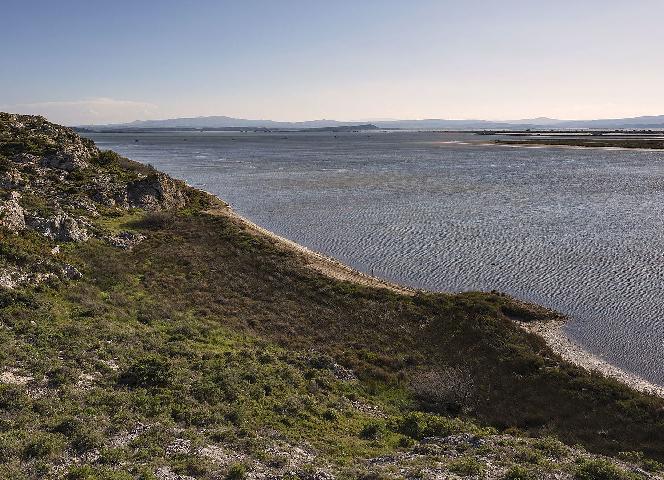
Vineyards
In a region where the cultivation of vines dates back to the 11th century BC (then highly developed under Roman occupation), Gruissan is home to numerous wineries and winegrowers. What's more, it's one of 87 communes in the department benefiting from the AOC Corbières appellation (which has grape varieties stretching from Carcassonne to the sea, and from the Montagne Noire to the foothills of the Pyrenees).
The vines of the Massif de la Clape are said to be exposed to the thirteen winds of the region ... enough to satisfy -so- (in moderation) lovers of fine wines from the South of France, with varied, quality products!"
This is THE relaxing rendezvous for families and children. Open from 8pm to 2am every summer evening, the park offers all kinds of shows and attractions (slides, electric cars, flying chairs ...). You'll also find plenty to nibble on, not forgetting ... the traditional fireworks display!
And much more ...
As you've seen, Gruissan isn't just a seaside resort. It's an ancient village, giving us a glimpse into the history of the very beginnings of the Languedoc coast. Whether it's a question of architectural heritage, wine or even being avant-garde in the urbanization of its marina, Gruissan is a town full of resources and events all year round, which will satisfy a variety of audiences!
